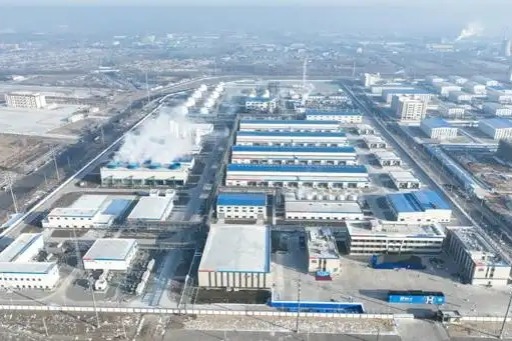Mission aims to take close look at the sun

The European Space Agency, or ESA, is counting down to the launch of its mission to the sun, a project that demonstrates the benefits of pan-continental cooperation in the immediate aftermath of the United Kingdom's exit from the European Union.
The agency says it has now nestled its Solar Orbiter inside a protective shield and mounted it atop the rocket that will take it to the center of our solar system, making it launch-ready.
The 1.3-billion-pound ($1.7 billion) project that aims to uncover intricate details of the workings of the sun involves extensive input from several European nations and a contribution from the United States.
Ian Walters, the program manager for Solar Orbiter at Airbus, the pan-European aerospace manufacturer, told BBC News: "It's an astonishing spacecraft. It's got 10 instruments to study the sun."
He said each instrument posed designers with unique challenges.
"Some want no dust contamination, some want a very clean magnetic environment, some want to be cold, some want to be hot. All these conflicting design drivers, we've been able to satisfy and deliver everything the scientists wanted," Walters said.
Airbus has spent the past decade steadily designing and assembling the satellite that, on Friday, was mounted on the United Launch Alliance Atlas rocket that will carry it to its destination.
The rocket is scheduled to blast off from Florida's Cape Canaveral complex in the US late on Sunday evening, local time.
While in orbit 42 million kilometers from the sun, the vessel will take very high resolution photographs of the surface of our nearest star, and attempt to measure the flow of charged particles and their magnetic fields-all from behind a heat shield that is designed to withstand temperatures of 500 C.
The UK played a major role in the project that will take the orbiter a maximum distance of 300 million km from the Earth. The probe was assembled at the UK arm of Airbus and two of its 10 instruments were designed and built by UK-based teams. The UK, which continues to be a member of the ESA despite its exit from the EU, invested 170 million pounds in the project.
Today's Top News
- Dialogue constructive way to rebalance trade
- AI needs to be governed wisely to ensure that it is beneficial for future of humanity: China Daily editorial
- China warns about Japan's intended military buildup
- China urges EU to halt anti-subsidy probes
- Experts: Lai not freedom fighter, but a pawn of the West
- Hainan evolves as gateway to global markets






























